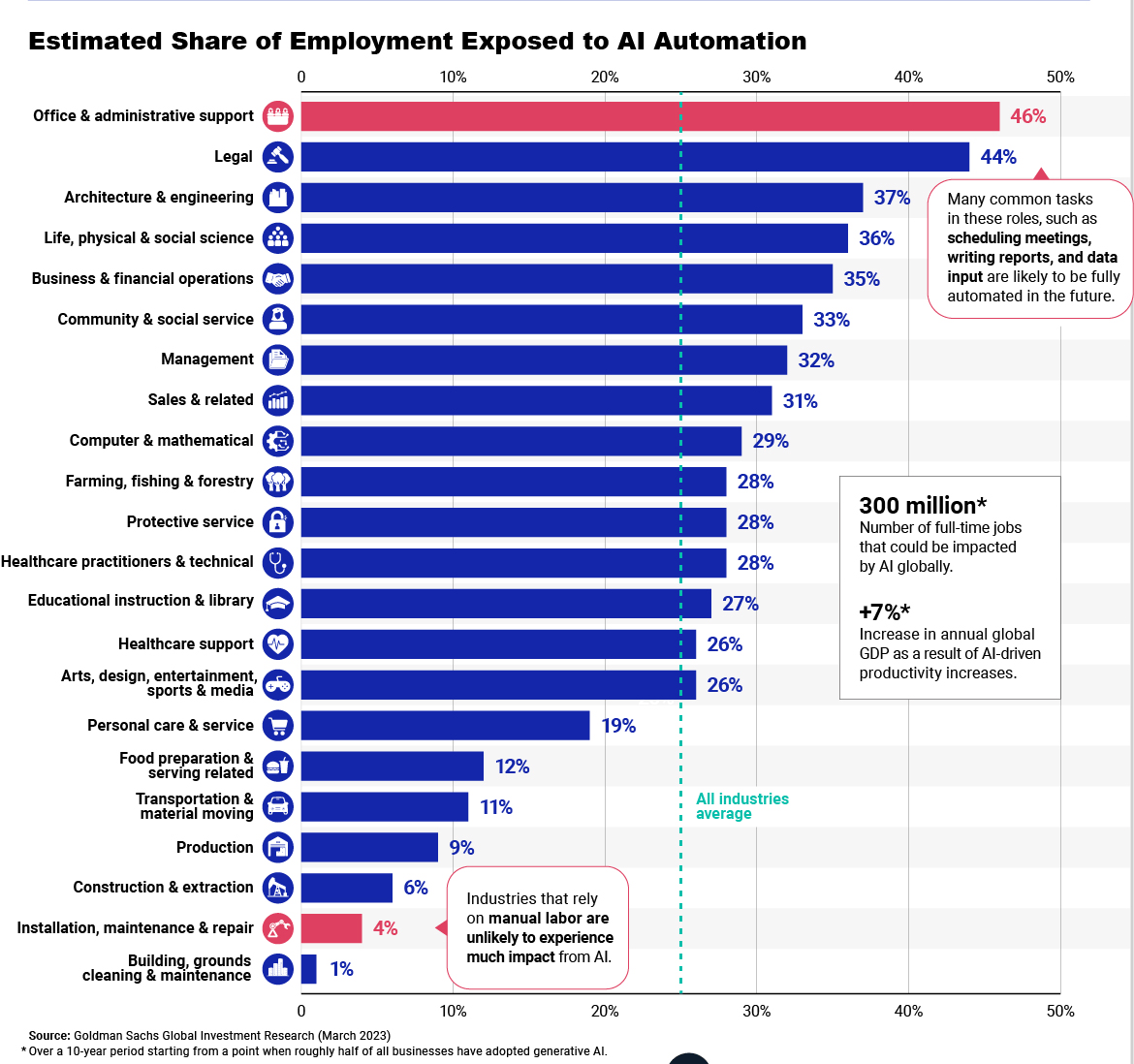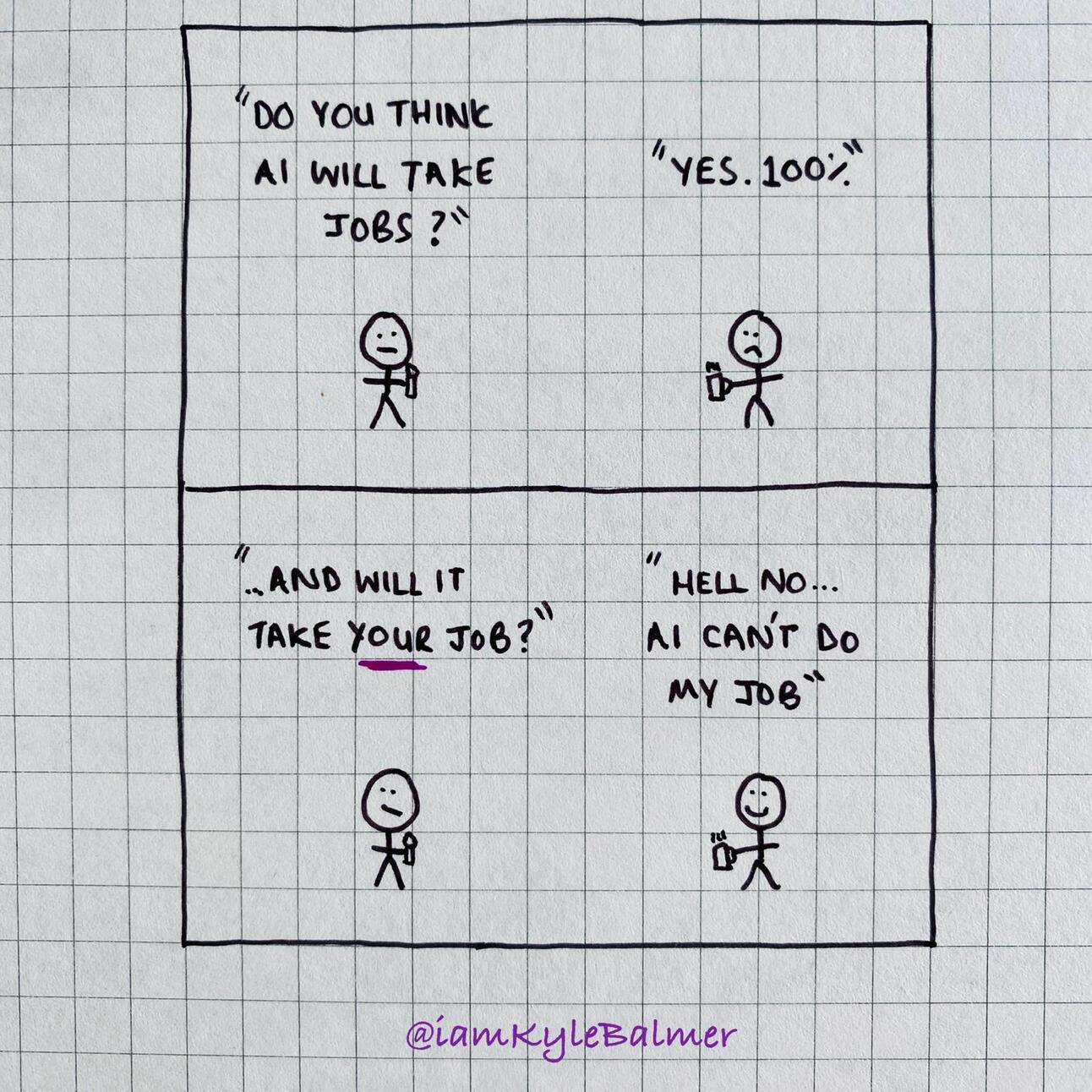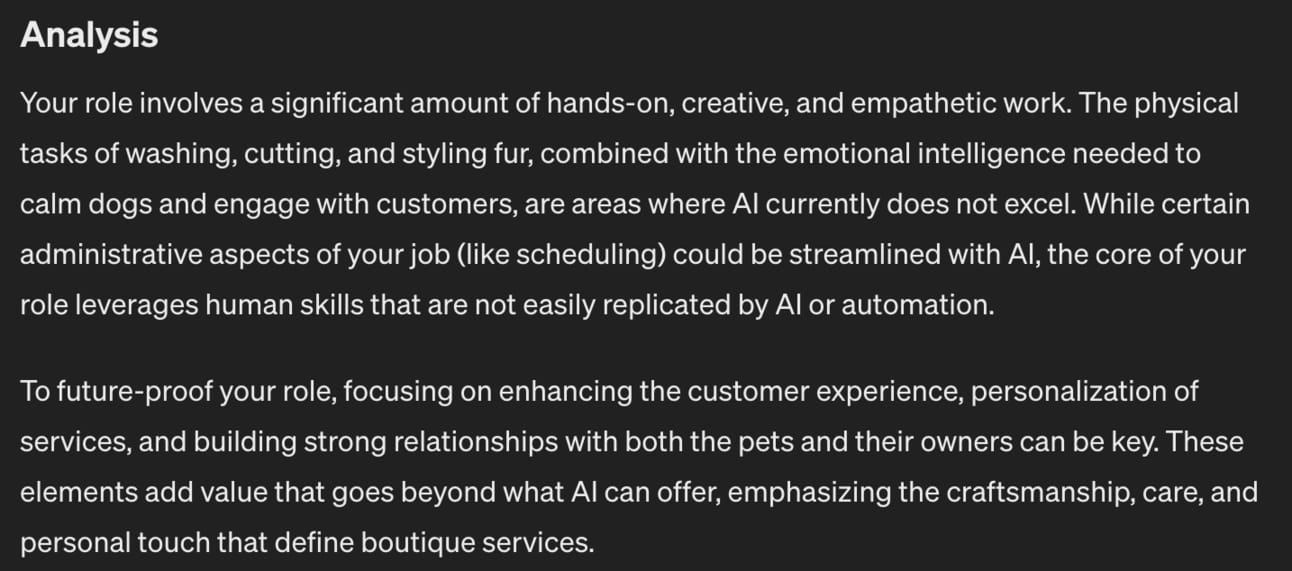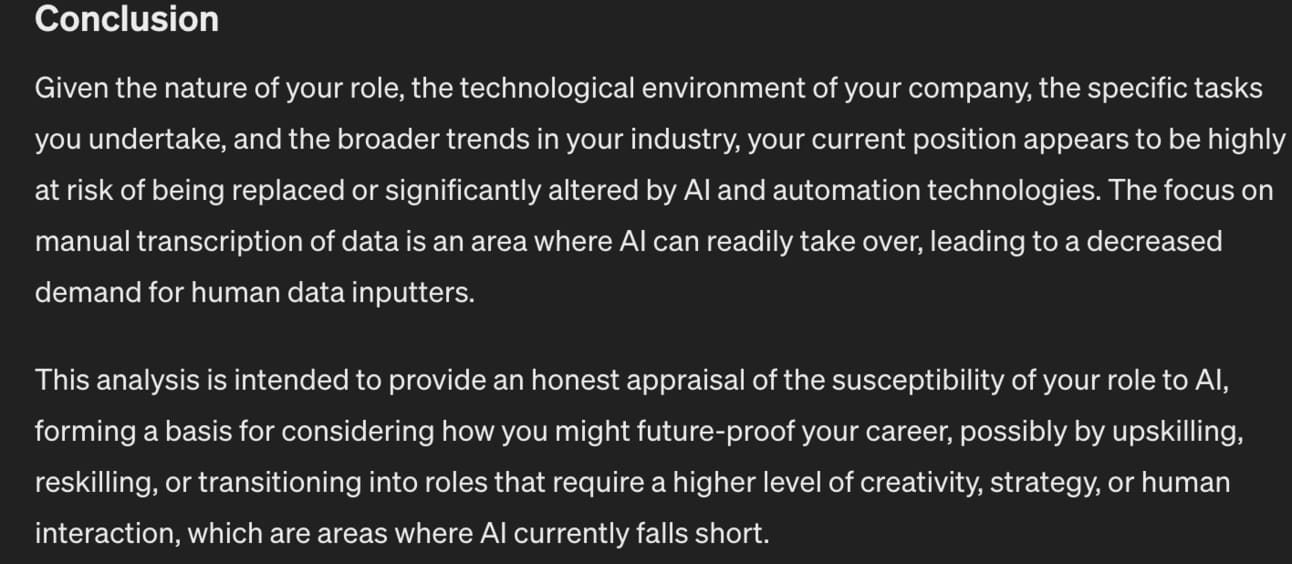Introduction
In this guide we’re tackling a subject that has been an increasingly hot topic in early 2024: how AI is going to impact work.
And more specifically: your job.
We’ll cover:
- Part 1: How bad can it be?
- Part 2: Future proofing
- Part 3: Be the disruptor
- Part 4: Skill up
- Part 5: Can’t beat ‘em, join ‘em
We’ll get rolling right after this word from our sponsor.
A sales tool for non-sales people to 6.7X leads in the background?
Used by 3,000+ businesses to make more moves

Nothing quite beats the feeling of getting rejected by 97% after hours of prospecting, does it?
Zaplify is the first sales tool designed for non-sales people used by sales pros for its proven 676% higher response rate than cold old emails – thanks to contextual AI.
Now, you can claim forever access to premium features & 20 prospects every month before they’re paywalled.
[LIFETIME OFFER] Grab your 20 FREE monthly prospects – while you still can
Let’s get started:
How bad can it be?
First up a warning.
This first Part is going to be quite scary and negative. Sorry!
This is because I need you to understand what’s coming. And not bury your head in the stand.
The result of the guide (4/5 Parts) is about the exciting opportunities that AI will bring us. And you specifically if you wish it.
But to get there first we need to look at why AI is such a big deal on work and jobs.
AI is here and making a mess already
If you’ve been watching the news recently you’ll have seen waves of layoffs starting in 2023 and rolling into 2024.
Most are in high tech companies but few industries are immune.
It’s starting in tech because this is where AI is immediately and obviously useful. AI is better at these sort of jobs and so can be easily integrated into tech companies.
But AI will roll from tech companies down to others in short order. For instance the film industry is already bracing for the impact of AI on writing and performance – hence the importance of AI in the WGA and SAG strike demands in 2023.
Here’s the thing though.
AI is here. The genie is out of the bottle.
It’s no good to try to shove it back in.
The best recent(ish) parallel is the internet.
There were detractors of the internet when it first became widespread.
And there are industries that have been smashed to pieces by the internet. Travels agents, record stores and bookshops are some obvious examples.
We’re going to see a similar if not larger shift with AI as we saw with the internet.
What industries are affected?
A question I get a lot is which industries are “safe” and which are most at risk.
Honestly, naming truly “safe” industries is really hard. My best answer is dog groomer I’ll talk about why in the next part.
What lots of people (incorrectly) assume is that AI will demolish low paid blue collar jobs first.
This has been the case with most technological shifts in history – the plough, loom, automobile etc. Generally industrial technological changes have automated physical work. Agricultural and craftspeople’s work.
AI is different.
It’s flipped the script. Because AI is about the “I”: intelligence.
AI is about cognitive rather than physical work. And as such it most affects white collar jobs. Not blue collar jobs like most technologies.
Here’s some research from Goldman Sachs (source):

It’s the white collar, office and professional work that is at risk. This is tricky for people to grok.
Yes but not me!

You’ve probably seen videos on Instagram or Tiktok where an interviewer in the street goes up to a member of the public and asks “what do you do for work?”
Member of the public: “oh I work in finance doing blah blah”
Interviewer: “wow what interesting work you have. Do you think AI will take jobs?”
Member of the public: “absolutely. It’s so clever. It’s going to revolutionise work and put a lot of poor people out of work”
Interviewer: “And will AI take your job?”
Member of the public: “haha god no, what I do is too complex and can’t be done by an AI.”
It happens again and again. It doesn’t matter what the person does.
They always think AI is someone else’s problem and that they are immune.
Ruh-roh.
I had an example this on Tiktok last week:

OK I was a bit mean. But he was being very cocky (and kept being cocky in comments) so I don’t feel too bad.
Planning consultants fall under legal/architectural (2nd and 3rd highest at risk in the chart above). Urban designer is 3rd highest. I won’t go into details about why exactly (it’ll take a while) but these two are definitely “gulp” worthy! Safest is property developer here – so thankfully he has 3 streams!
What about my role?
OK let’s use a prompt to do an analysis of your role and provide some insight into whether it’s at risk.
We’ll use this in the next Parts to future proof your role.
This’ll work whether you are in a 9-5 or run a business.
Act as a tool helping me future proof my role against AI.
First I want to analyse what parts of my role are at risk of being replaced by AI.
Ask me, in order, these questions:
1. What is your job description?
2. What is your company?
3. What do you spend most of your working day doing - use verbs like "writing, responding to emails, taking meeting notes" etc.
4. What is your industry?
Use this information to analyse how at risk to AI my role is.
Do no pull punches. The purpose of this analysis is to lay the foundations for future proofing my role. Therefore I require an honest appraisal first. Do not tell me about the positives of AI - it's irrelevant to this analysis.Here’s an example using dog grooming:

And here’s an example using data entry:

The prompt is designed to be honest. Otherwise ChatGPT will naturally tell you not to worry and how great AI is. Which…isn’t very helpful!
Use this prompt and your honest answers so that at least you know what we need to be working on in the rest of this guide’s Parts.